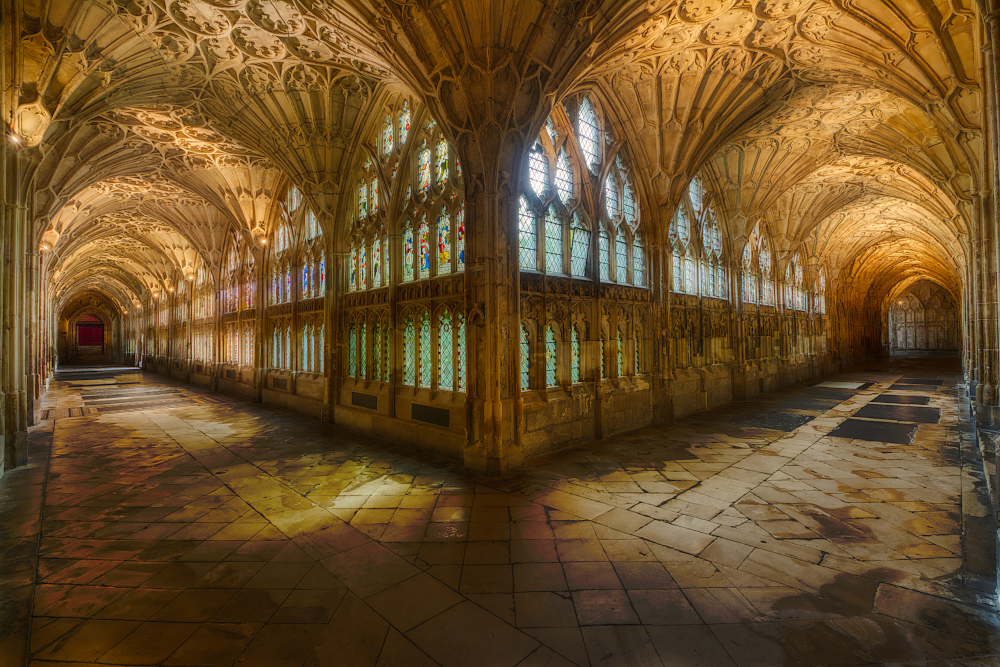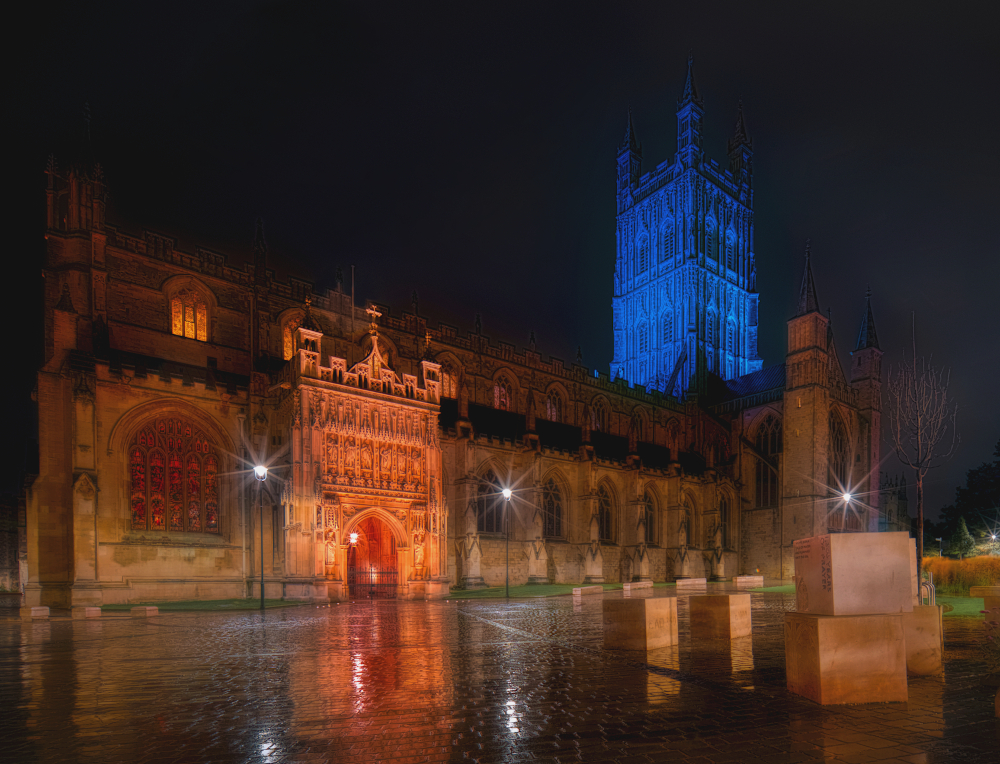
Gloucester 500
Gloucester 500 is the pet project of Shadowed Eyes. It began when the Covid-19 pandemic restricted our horizons to within walking distance of home. This led to the discovery that what appeared to be a fairly nondescript post-war suburb had a history that stretched back to the late Bronze Age and that some of the old properties that have survived the tide of Gloucester's urbanisation are listed by Historic England. Gloucester 500 is a long-term project to photograph all of them, though becoming a former resident of Gloucester makes it something of a Sisyphean task now.
As of July 2021, some 300 sites have been photographed (though there are cases, particularly in the city, where multiple sites appear in a single image). A public Facebook group – Gloucester 500 – has been set up, and everyone is welcome to follow and join in. The Gloucester 500 shield logo is based on the city's slightly monarchy trolling coat of arms. The GD reflects Gloucester's origins, both as the Roman colonia of Glevum and the fact that D is the Roman numeral for 500, whilst the blue wavy bit at the bottom represents the Severn.
Copyright and Re-use of Images
All images are copyright Shadowed Eyes unless otherwise credited. Images may be re-used non-commercially in electronic form only and only for the purposes of education about Gloucester or the promotion of the heritage and history of Gloucester, with attribution and link to the Gloucester 500 project website home page. Images may not be re-used in printed form or for commercial purposes without prior permission.
Website
This website is designed to be viewed on a desktop system, but will (or at least should) respond elegantly and gracefully to the smaller displays of tablets and smartphones. It requires JavaScript (enabled by default on all browsers) to function properly. Cookies are not used on this site and no data is collected by this site, not even so much as a hit counter; it's just a hobby site.
Linking Conventions
Internal links to other pages on this website are coloured magenta and open in the same window.
External links to other websites are coloured grey/blue and open in a new window.
Most links become underlined when the mouse hovers over them.
The main menu displayed at the top of every page is a rule unto itself, but fairly self-explanatory.
The following icons are used in the listings sidebar, which links to the Historic England details for the given listing
External link to a grade I listing
External link to a grade II* listing
External link to a grade II listing
External link to a scheduled monument listing
The following icons are used in other sidebars, most often the sources.
External link to a website
External link to a video
Denotes an offline print source
For sources, hovering over the text will show publisher information for that source.
The Listings
As of May 2024, Historic England actually lists 484 sites in Gloucester, but this may change over time, some additional sites can be found in the Gloucester postal district but outside the city limits, and anyway 500 makes for a snappier title.
With 35 grade I sites, 50 grade II* sites and 377 grade II sites, Gloucester enjoys a higher than average proportion of the higher grade listings. Listed sites range in size and grandeur from the near thousand-year-old Cathedral to 16th-century or later farmhouses which have survived the tide of urbanisation that has swept around them as Gloucester grew. The oldest listed site is the ruin of the Saxon-origin St. Oswald's Priory, while the youngest is the Church of St. Aldate on Finlay Road, which was consecrated in 1964.
The remaining 22 listed sites are scheduled monuments. In Gloucester, these scheduled monuments are historic sites – such as Glevum Roman Colonia, distributed within the original Roman city walls and now covered by shops – for which there is nothing left to photograph without either some clandestine excavations or storming the fencing of construction sites.
Referring to listed heritage as sites rather than buildings is a tad cumbersome but technically accurate. The war memorials at Gloucester Park, the most recent additions to Gloucester's listings, are not buildings but structures, and despite the single listing there are two different structures erected seven years apart to serve two related but quite separate functions. A fair few listings comprise multiple subjects, another example being listing 1245071, which encompasses Nos. 99 and 101 Westgate Street, now part of the Folk of Gloucester. If we separate out all of Gloucester's listings into the discrete structures they encompass, treating for example the separate addresses in a residential terrace as separate buildings, there are at a rough count some 700 listed structures in the city.

People-free cloisters at Gloucester Cathedral

Non-converging verticals at Gloucester Cathedral
The Photography
The images on this site were captured using enthusiast-level cameras, initially a Nikon D7100, later a Nikon Z6. Lenses are with very few exceptions wide-angle, and on the Z6 a shift lens. A pet hate in architectural photography is convergence of parallel lines. When we look up at a building, our brains interpret what we see according to what we know, i.e. that vertical lines look vertical. Cameras are not so clever and take everything literally, so vertical lines seem to converge as they go up in the same way that railway lines seem to converge as they recede into the distance. With normal photography where a camera must point above horizontal to fit a tall structure into the shot this results in photos of buildings that lean at crazy and unrealistic angles. A shift lens fixes this, producing more realistic representations of architecture that would otherwise require a jetpack to obtain.
All images are HDR (High Dynamic Range). Cameras lack the human eye's ability to accomodate wide ranges of light. If they are set to capture detail in the darkest parts of a scene, then the lightest parts, such as the sky, are over-exposed and detail is lost. If the camera is set to capture details of the lightest parts of the scene, then the darkest parts are under-exposed and detail is lost. HDR photography overcomes this technical constraint and allows details across the whole range of light in any given scene to be captured. It works by taking multiple photographs of the scene at different exposures, from fast expsoures which capture detail in the lightest parts of the scene to slow exposures which capture detail in the darkest parts of the scene. These multiple exposures are then combined into a single image using post-processing software. All G500 images comprise five exposures merged using Skylum Aurora software.
HDR is a cumbersome way to take photographs. It requires a tripod and cannot handle movement at all well. But done well it can produce some eye-popping results. Unfortunately, it's very easy to go too far and 'overcook' HDR, producing unrealistic images, often with vulgar, over-exuberant colours and alien skies. This has resulted in a bad rap for HDR and often the blanket assertion that HDR is bad photography. But HDR has its place and is not in itself intrinsically bad, even if, like any photography, it is sometimes badly executed. Whether the images on this site are done well or badly executed is for each to decide for themselves (and certainly, there's some here that are just placeholders until a better effort can be made, and it's a very rare image indeed in which I cannot myself find any fault).
As far as possible I have tried to capture and preserve the history of a structure in the images I produce. This means as far as humanly possible no cars or modern clothing fashion that jars with the historical scene. Lockdown actually helped with this, but now that things have returned to normal (which, sadly, includes way more cars than a historic pedestrianised city centre should really have) it's a self-imposed demand that requires some patience; my record is an hour stood waiting for people to clear from the cloisters at Gloucester Cathedral. This is also the reason why there are so many night images, though the contradiction here is of course 20th-century lighting, but that makes for some striking scenes, so hey-ho, my project, my images, my rules.